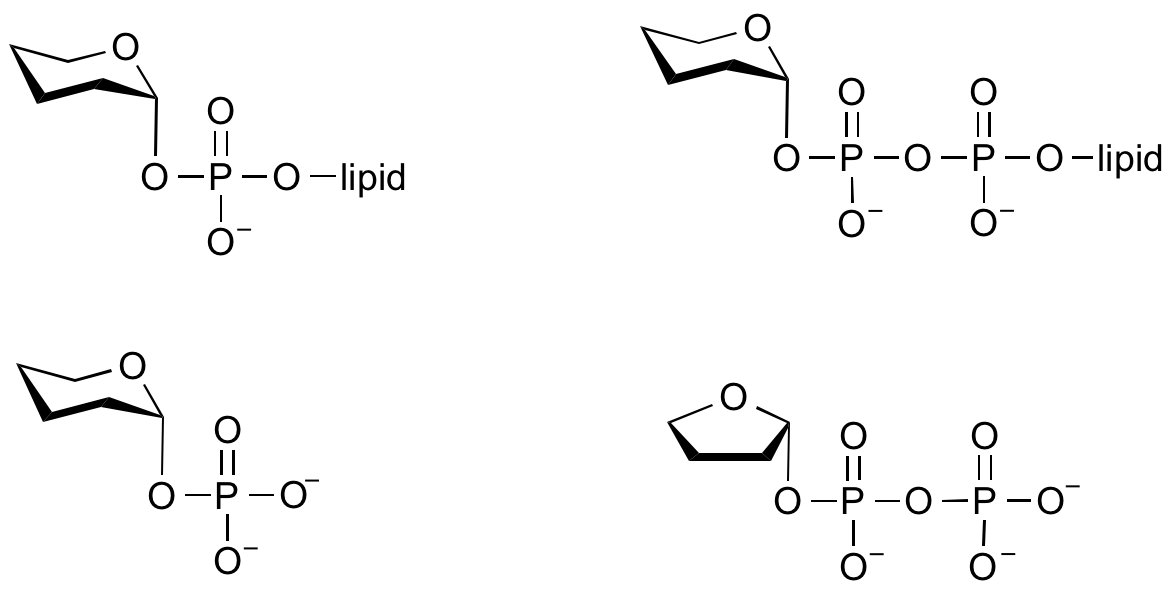CAZypedia needs your help! We have many unassigned GH, PL, CE, AA, GT, and CBM pages in need of Authors and Responsible Curators.
Scientists at all career stages, including students, are welcome to contribute to CAZypedia. Read more here, and in the 10th anniversary article in Glycobiology.
New to the CAZy classification? Read this first.
*
Consider attending the 15th Carbohydrate Bioengineering Meeting in Ghent, 5-8 May 2024.
Difference between revisions of "Glycosyltransferases"
Harry Brumer (talk | contribs) (Incorportated PDB link into jmol header) |
|||
| Line 30: | Line 30: | ||
|- | |- | ||
| − | | <center>SpsA from ''Bacillus subtilus'', PDB code [{{PDBlink}}1h7l 1h7l] <cite>Charnock1999</cite>. The complex also contains two magnesium ions and a molecule of thymidine-5'-diphosphate.<br /> | + | | <center>A representative GT-A fold: SpsA from ''Bacillus subtilus'', PDB code [{{PDBlink}}1h7l 1h7l] <cite>Charnock1999</cite>. The complex also contains two magnesium ions and a molecule of thymidine-5'-diphosphate.<br /> |
<jmol> | <jmol> | ||
| Line 41: | Line 41: | ||
</jmol> | </jmol> | ||
| + | {|name="userboxes" id="userboxes" style="margin-left: 1em; margin-bottom: 0.5em; width: 170px; border: {{{bordercolor|#99B3FF}}} solid 1px; background-color:{{{backgroundcolor|#FFFFFF}}}; {{{extra-css|}}}" align="right" | ||
| + | |||
| + | |- | ||
| + | |||
| + | |- | ||
| + | |||
| + | | <center>A representative GT-B fold: Bacteriophage T4 beta-glucosyltransferase, PDB code [{{PDBlink}}1bgt 1bgt] <cite>Vrielink1994</cite>.<br /> | ||
| + | <jmol> | ||
| + | <jmolApplet> | ||
| + | <color>white</color> | ||
| + | <frame>true</frame> | ||
| + | <uploadedFileContents>1h7l.pdb</uploadedFileContents> | ||
| + | <script>cpk off; wireframe off; cartoon; color cartoon powderblue; select ligand; wireframe 0.3; select MG; spacefill;set spin Y 10; spin on; set antialiasDisplay ON</script> | ||
| + | </jmolApplet> | ||
| + | </jmol> | ||
</center> | </center> | ||
| Line 58: | Line 73: | ||
#Coutinho2009 isbn=978-0-470-01667-1 | #Coutinho2009 isbn=978-0-470-01667-1 | ||
#Charnock1999 pmid=10350455 | #Charnock1999 pmid=10350455 | ||
| + | |||
| + | #Vrielink1994 pmid=8062817 | ||
</biblio> | </biblio> | ||
[[Category:Definitions and explanations]] | [[Category:Definitions and explanations]] | ||
Revision as of 20:45, 14 August 2010
This page is currently under construction. This means that the Responsible Curator has deemed that the page's content is not quite up to CAZypedia's standards for full public consumption. All information should be considered to be under revision and may be subject to major changes.
- Author: Spencer Williams
- Responsible Curator: Spencer Williams
Overview
Glycosyltransferases are enzymes that catalyze the formation of the glycosidic linkage to form a glycoside. These enzymes utilize 'activated' sugar phosphates as glycosyl donors, and catalyze glycosyl group transfer to a nucleophilic group, usually an alcohol. The product of glycosyl transfer may be an O-, N-, S-, or C-glycoside; the glycoside may be part of a monosaccharide glycoside, oligosaccharide, or polysaccharide ([1, 2, 3, 4, 5]).
Donors
Glycosyltransferases can utilize a range of donor species. Sugar mono- or diphosphonucleotides are sometimes termed Leloir donors (after Nobel prize winner, Luis Leloir); the corresponding enzymes are termed Leloir donors.
Glycosyltransferases that utilize non-nucleotide donors, which may be polyprenol pyrophosphates, polyprenol phosphates, sugar-1-phosphates, or sugar-1-pyrophosphates, are termed non-Leloir glycosyltransferases.
Mechanism
Glycosyltransferases catalyze the transfer of glycosyl groups to a nucleophilic acceptor with either retention or inversion of configuration at the anomeric centre. This allows the classification of glycosyltransferases as either retaining or inverting enzymes.
Inverting glycosyltransferases
Structural and kinetic data for inverting glycosyltransferases support a mechanism that proceeds through a single nucleophilic substitution step, facilitated by an enzymic general base catalyst. The transition state is believed to possess substantial oxocarbenium ion character.
Retaining glycosyltransferases
3-D folds
<jmol> <jmolApplet> <color>white</color> <frame>true</frame> <uploadedFileContents>1h7l.pdb</uploadedFileContents> <script>cpk off; wireframe off; cartoon; color cartoon powderblue; select ligand; wireframe 0.3; select MG; spacefill;set spin Y 10; spin on; set antialiasDisplay ON</script> </jmolApplet> </jmol>
Role of metalsCommon sugar nucleotide donorsReferences
|

